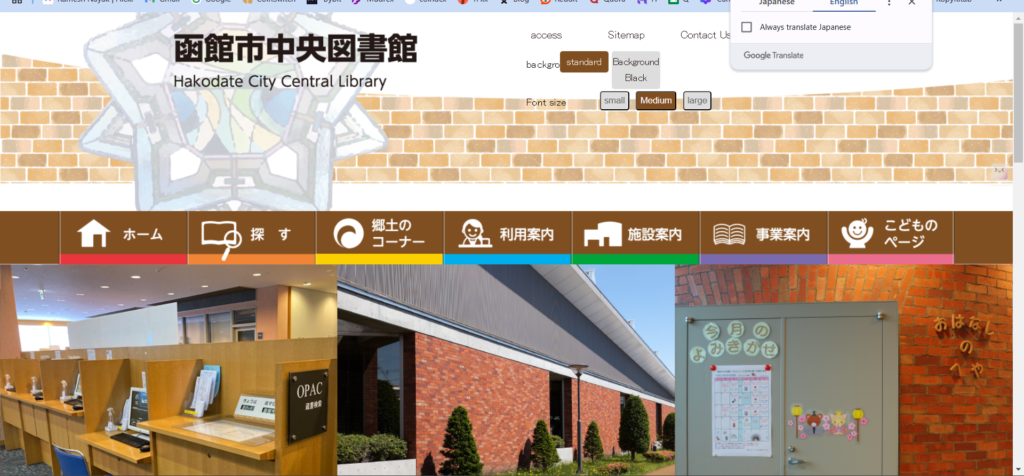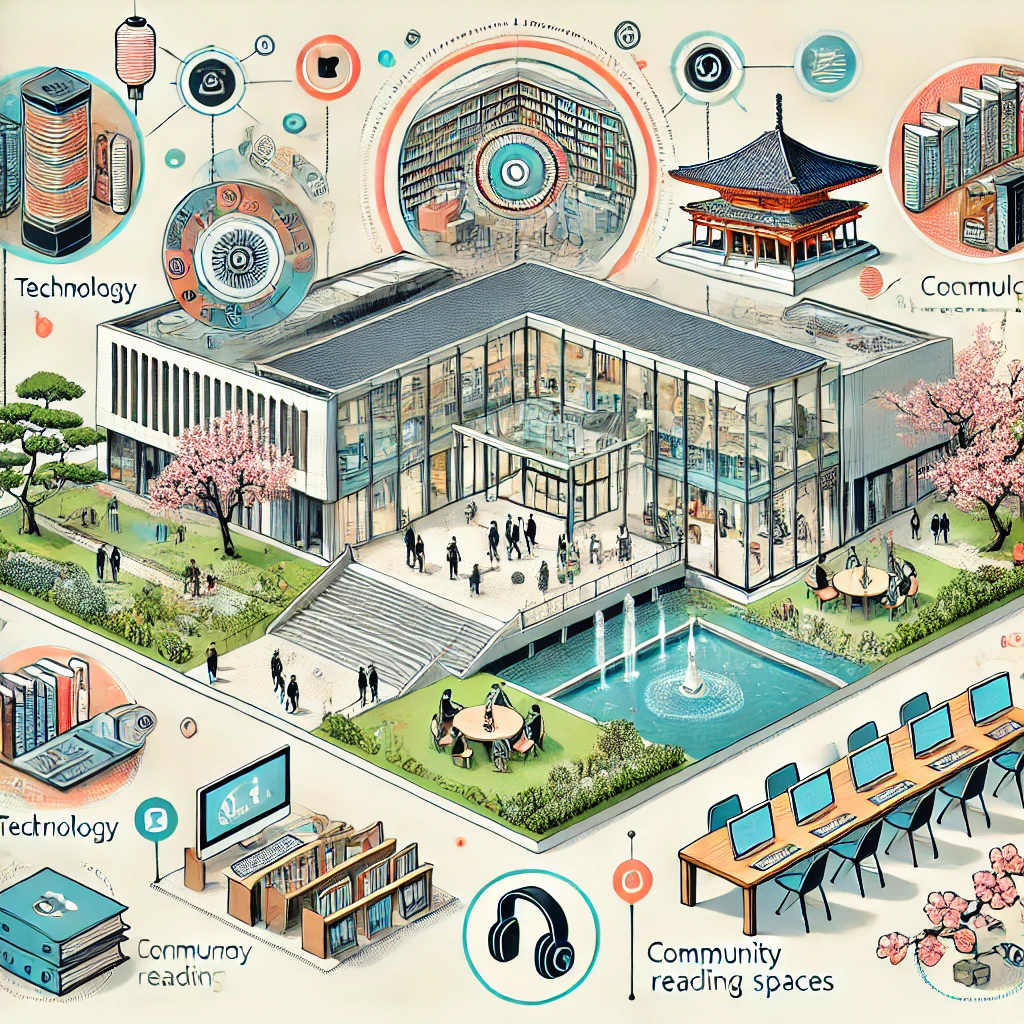Japan is noted for its rich cultural legacy, technical advancements, and strong emphasis on education. Public libraries are crucial to the nation’s education system and cultural transmission, playing an important part in the lives of Japanese citizens. As of 2008, there were 3,106 public libraries in Japan, including regional, prefectural, city, and town libraries. This extensive network of libraries demonstrates Japan’s dedication to providing accessible education, encouraging reading habits, and preserving cultural history.

The Structure of Japan’s Public Libraries
Japan’s public library system is hierarchical, with numerous types of libraries servicing different geographical areas and demographics. These libraries are divided into four categories: regional, prefectural, city, and town libraries. Each type of library serves a unique purpose in meeting the educational and informational needs of the local community.
Regional Libraries
Regional libraries are Japan’s largest and most extensive library. In 2008, the entire country had only one regional library. This library, located in Tokyo, serves as a hub for library services and resources throughout Japan. It is in charge of organising operations between numerous public libraries across the country, as well as providing a plethora of information and materials to scholars, students, and the general public.
The regional library serves not only as a knowledge repository, but also as a hub for organising and delivering library-related training programs, workshops, and conferences. The library’s wide collection contains academic texts, research papers, historical documents, and other resources useful to academics in a variety of subjects.
Prefectural Libraries
There are 62 prefectural libraries located around the country. Each of Japan’s 47 prefectures has its own public library system, which is in charge of providing library services within its territory. Prefectural libraries typically offer more specialised materials than city or town libraries, catering to a more intellectual or specialised audience. These libraries often include resources for academic study, government publications, and specialised subjects that may not be available in local city libraries.
Prefectural libraries also act as hubs for organising community-based library activities like as educational outreach, reading clubs, and language learning programs. They are also critical for making information and resources available to residents living in rural or distant places.
City Libraries
The 2,433 city libraries in Japan constitute the country’s largest public library system. City libraries serve urban populations and are situated in the centre of Japan’s cities, towns, and metropolitan districts. These libraries provide a diverse range of materials and resources to suit the informational, recreational, and educational requirements of their communities.
City libraries often have substantial collections of books, journals, and multimedia resources. They routinely organise community events including book readings, workshops, and exhibitions. Many metropolitan libraries also function as cultural centres, hosting educational programs and activities for children, teenagers, and adults. They also provide access to computer terminals, internet services, and other digital resources, which is especially important in places where these resources are scarce.
Town Libraries
There are 610 town libraries around Japan. Town libraries often serve smaller communities, with less resources and collections than their city counterparts. However, they continue to serve a vital role in facilitating access to books, newspapers, and other publications. Town libraries play a vital role in creating a reading and learning culture in smaller, rural communities where access to larger libraries is limited.
These libraries frequently collaborate with local schools, community organisations, and senior citizen groups to offer outreach programs and services that are tailored to the specific needs of their communities. In some circumstances, town libraries can host local government meetings or community events.
The Role of Public Libraries in Japanese Society
Public libraries in Japan are considerably more than just places to borrow books. They operate as cultural, educational, and social centres, offering a wide range of services to fulfil the requirements of the community.
Cultural Preservation
Japanese public libraries are dedicated to preserving their country’s rich cultural legacy. Libraries gather and preserve items on Japan’s history, literature, art, and traditions. Many libraries have specific collections of works by prominent Japanese authors like Natsume Sōseki, Yukio Mishima, and Haruki Murakami. Libraries also house collections of old newspapers, historical records, and artefacts, which are invaluable to scholars, historians, and students of Japanese culture.
In Japan, public libraries play an important role in the preservation of the national language. Libraries guarantee that Japanese children have access to books in their own language while also preserving Japanese language materials for future generations.
Educational Support
Japanese libraries have long been strongly linked to the country’s educational system. Libraries are valuable resources for students at all educational levels, from elementary school to university. Libraries are stocked with textbooks, academic papers, and other materials to assist students with their assignments and research projects. In addition, many libraries provide courses and tutoring programs to help children strengthen their academic skills.
Libraries in Japan also promote lifelong learning projects for adults. Many libraries provide programs to help adults improve their literacy skills, acquire a new language, or get vocational training. These programs promote a culture of continual learning, allowing people to develop new talents throughout their lives.
Community Engagement and Support
Public libraries in Japan also function as significant community hubs. They are locations where people may gather to socialise, discuss ideas, and learn new things. Many libraries provide a variety of programs aimed at strengthening community bonds and connecting people from different backgrounds.
Libraries, for example, may hold cultural activities like art exhibitions, plays, and film screenings. They may also host book clubs, storytelling events, or language exchange programs to bring individuals from other cultures together. In this approach, public libraries in Japan promote social cohesion and help to establish stronger, more connected communities.
Digital Access
As technology advances, Japanese public libraries have embraced digital resources to meet the changing needs of their communities. Many libraries provide access to computers, internet services, and digital literature. They have also made considerable expenditures in digitising their holdings, which will allow individuals to access rare books and documents online.
The rise of digital media has altered how individuals use and interact with library resources. Public libraries today offer a wide range of formats and content, including e-books, online databases, and multimedia resources. Libraries also provide programs to help people develop digital literacy skills, ensuring that even those living in rural areas or with limited access to technology can benefit from these advancements.
Challenges Faced by Japan’s Public Libraries
While Japan’s public library system is enormous and highly valued, it confronts a number of issues. One of the most significant difficulties is ensuring fair access to library services across the country. Although major towns and urban centres have a multitude of resources, rural communities may suffer with fewer library branches and limited access to advanced digital services. Some smaller communities experience budgetary limits, which can limit the availability of resources, personnel, and programs.
Another concern is the increasing popularity of digital media consumption. With more individuals accessing information and entertainment via smartphones, tablets, and laptops, some libraries have noticed a decrease in traditional book rentals. However, many libraries have responded by expanding their digital collections to include e-books, audiobooks, and online research databases. This move enables them to remain relevant in the digital era.
Finally, public libraries in Japan must constantly adapt to the changing demands of their communities. Libraries, like civilization, must adapt over time. They must discover innovative ways to engage young people, who are increasingly using digital media, while also meeting the needs of the elderly, those with disabilities, and other marginalised groups.
Japan’s public libraries play an important role in promoting education, maintaining cultural history, encouraging community involvement, and adapting to the digital age. With over 3,000 libraries around the country, Japan has established a strong and accessible network of library services to meet the different requirements of its citizens.
As of 2008, the library system consisted of regional, prefectural, city, and town libraries, each with a distinct role in the greater network. While the public library system confronts challenges in an increasingly digital environment, it is nevertheless an important institution for spreading knowledge, culture, and community in Japan. As the country evolves, public libraries will definitely remain at the core of Japanese society, functioning as centres for learning, culture, and connection.







